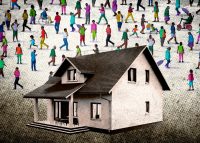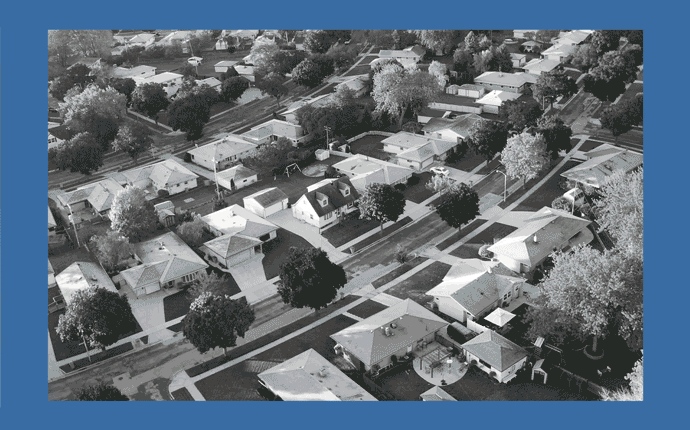 LI agents routinely discriminate against minority buyers, probe finds
LI agents routinely discriminate against minority buyers, probe finds
Trending
How builders are changing America’s suburbs to fit the times
New book shows the ’burbs ain’t what they used to be

Donald Trump vowed to protect the suburbs from low-income housing, but more Americans in poverty live in the suburbs than in urban areas, note authors June Williamson and Ellen Dunham-Jones.
Their new book challenges popular notions about who lives in the suburbs and offers ideas for reshaping them, Vice reported.
In “Case Studies in Retrofitting Suburbia: Urban Design Strategies for Urgent Challenges,” the authors document 32 examples of redesigning the suburbs to respond to their new demographics and the preferences of those who live there.
One is repurposing parking spaces. The U.S. has nearly two spots per person, but in some places there are many more — 19 in Des Moines and 27 in Jackson, Wyoming, for example. Dunham-Jones observed dryly that the country has “a right to park as opposed to a right to housing.”
“Cars have much more protection than people do,” she told Vice in an interview.
Other suburban spaces — or suburb-like spaces in urban areas — could be retrofitted, too. In Fort Worth’s Grand Plaza, sprawling multi-story department stores have given way to a Latino mall, a hive of small businesses reminiscent of the mercados of Mexico. The mall’s central atrium hosts events including Mexican wrestling.
Repurposing suburbs is a response to shifts in the way people work and prefer to live. Jobs are no longer concentrated in urban downtowns. The desire for privacy and space to park has given way to an interest in public space, community activities and walkability.
Repurposing the suburbs is an opportunity to promote social equity and affordability, Dunham-Jones and Williamson argue. Empty strip malls could be converted to supportive housing, or housing for the elderly, in a way that would not keep car-less seniors stranded.
[Vice] — Georgia Kromrei
Read more
 LI agents routinely discriminate against minority buyers, probe finds
LI agents routinely discriminate against minority buyers, probe finds
 US is short nearly 4M new homes: report
US is short nearly 4M new homes: report




